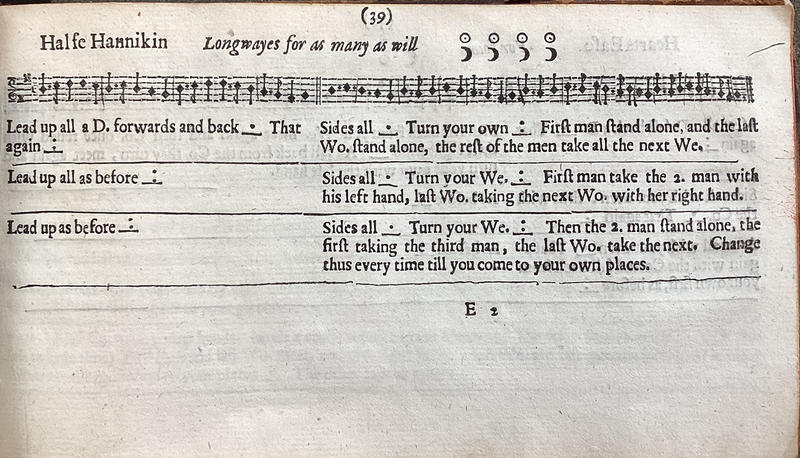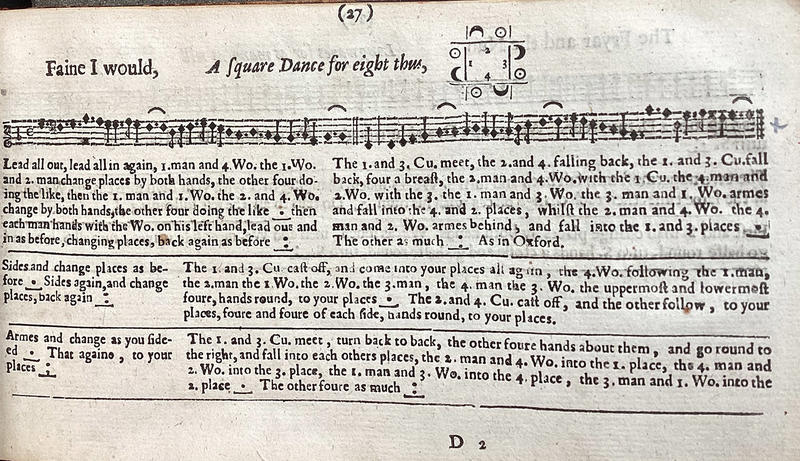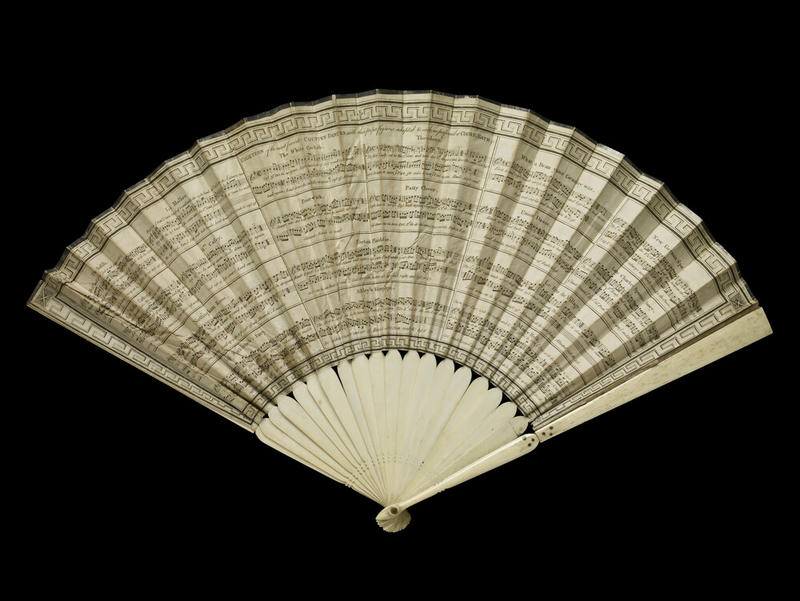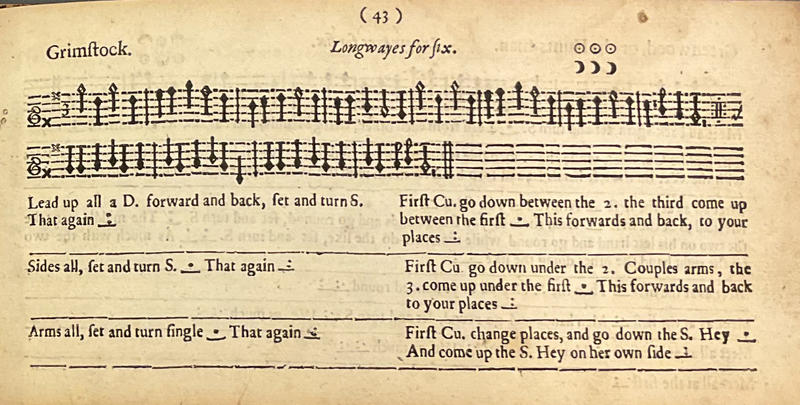Playford’s Dancing Masters: how to learn English country dances
Article by: Matthew Coatsworth | Published: September 2023
Period dramas like Pride and Prejudice adaptations and Bridgerton have popularised the idea of the regency ball: couples dancing together in perfect unison with an original – or contemporary – soundtrack.
But does the history match the screen?
The Bodleian’s collection of printed dances explores the early beginnings of formalised dance instruction, in particular those for English country dances.
What was The Dancing Master?

The Dancing Master was published by John Playford in 1651. Playford became the leading English music publisher of his time.
The Dancing Master contained the melodies and dance instructions for just over 100 English country dances. It was the first publication of its kind, and is hugely important as a record of early dance.
Playford's new method of printing music meant it took less effort – and cost less – to produce than before, enabling more people to purchase music.
In its time, The Dancing Master was so popular that it ran to 18 editions from 1651 to 1728, first published by John Playford, and later by his son Henry.
https://www.youtube-nocookie.com/embed/qikQdvkQ27c
What was included in Playford’s Dancing Masters?

The Dancing Masters included the titles, music and dance instructions for each dance published. It is unlikely that Playford wrote any of the melodies or dances himself. Instead he collected popular dances of the time.
The English country dances included in the book range in age. Mundesse – a round dance – may be the oldest. It is almost certainly derived from a dance from 1551, one hundred years before it was published here.
Other dances had royal connections: Halfe Hannikin was a country dance that had been performed by the future king Charles I in 1623 in front of his court in a ball called a masque.

Wood 125 Playford, J. (1652) The Dancing Master, 2nd edition (Bodleian Libraries)
The English Civil War concluded the same year as the first book was published – 1651.
Some of the published dances and music reflect this change. The ballad Faine I would if I could, also known as The King’s Complaint, appears here after Oliver Cromwell’s parliament tried to suppress it. The dance also had royal connections, having been performed in front of Charles I during the court’s time in Oxford.

Wood 125 Playford, J. (1652) The Dancing Master, 2nd edition (Bodleian Libraries)
Later editions from The Dancing Master continued to include older dances matched with newer tunes taken from popular ballads such as Jamaica, which may be best known to current audiences as the theme tune to the BBC television series Upstart Crow.
The approach taken in Bridgerton, using contemporary pop songs as the soundtrack to the dances, is therefore following in the footsteps of Playford’s Dancing Masters.
Whereas the first edition in 1651 featured more circle dances, by the start of the 18th century, longways dances such as The Indian Queen were more typical.
Who would have bought the original copies of The Dancing Master?

Playford’s introduction, entitled ‘To the Ingenious Reader’, refers to dancing in the ‘Courts of Princes’ and by ‘The Gentlemen of the Innes of Court’. It is likely that Playford’s customers would have been educated people.
One was Samuel Pepys: in his celebrated diary he wrote, ‘By water down to Greenwich and then walked to Woolwich, all the way reading Playford’s Introduction to Musique wherein are some things very pretty.’
How would everyone know how to dance at balls?

Playford’s books, and indeed later publications such as this dance fan, was to remind dancers of the steps.
Nowadays a caller leads dancers through the steps before a full run-through.

Folding fan with engraving of musical scores of eighteenth century dances adapted for Court Ball, WA1915.33.4. Image © Ashmolean Museum, University of Oxford
Would Jane Austen have recognised Playford dances?

Almost certainly not. The final edition of Playford’s Dancing Master was published in 1728, almost 50 years before Jane Austen was born. Her books talk of cotillions, quadrilles, waltzes and country dances, and only the latter would have been in existence back in Playford’s time. Dance publications from the early 19th century, whilst following a similar format to Playford’s Dancing Master, reflected the changes in fashion.
However, Playford’s dances might be recognised by today’s audiences.
Country dances such as Grimstock, which featured in the 1995 BBC series of Pride and Prejudice (episode 2, at Mrs Phillips' house), appear throughout Playford’s Dancing Master.
Other dances that have been used in television and film adaptations include Hole in the Wall and Mr Beveridge’s Maggot.

Grimstock, Bodleian Libraries, Harding Mus. F 328
What Dancing Masters does the Bodleian have in its collection?

The Bodleian Libraries has a number of editions of Playford's Dancing Master.
The largest group of Dancing Masters come from the Walter N.H. Harding collection, bequeathed to the library in the mid-1970s – one of the largest donations ever received.
Harding was a ragtime pianist and organist, performing in music halls, cinemas, churches and masonic lodges in his home city of Chicago. He was a fanatical collector of books and printed music, especially song books, opera scores, printed verse and drama, ballads, broadsides and popular songs. As a result of his bequest, the Bodleian also now possesses what is probably the largest collection of American popular song on this side of the Atlantic.
Harding’s interest in folk music led him to collect as many different editions of Playford’s Dancing Master as he could find.
Other copies come from the collections of the antiquaries Francis Douce (1757–1834) and Oxford-born Anthony Wood (1632–1695).
Lead image: Playford, J. (1652) The Dancing Master, 2nd edition, Bodleian Libraries, Don. e. 118
Find out more

- A history of English folk tunes (Podcast)
- Papers from the conference 'On Common Ground 3: John Playford and the English Dancing Master'
- National Resource Centre for Historical Dance
- Music collections at the Bodleian
- Oxfordshire Folk Dance Association
- English Folk Dance and Song Society
- Listen to ten tracks from Playford's Dancing Master (SoundCloud)




